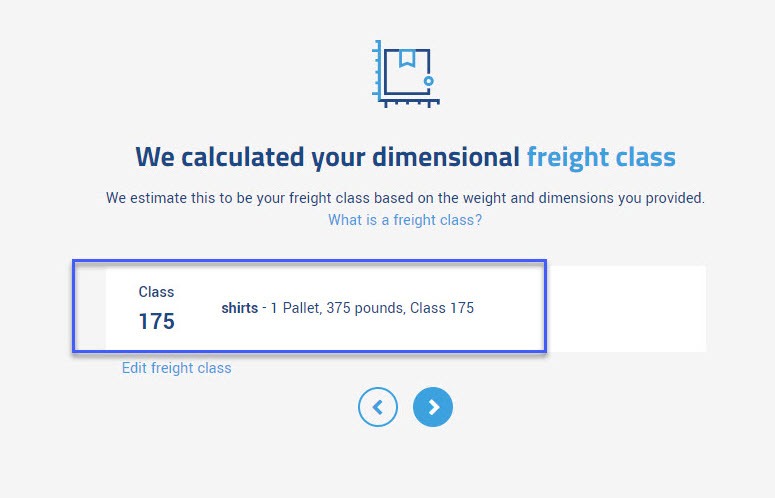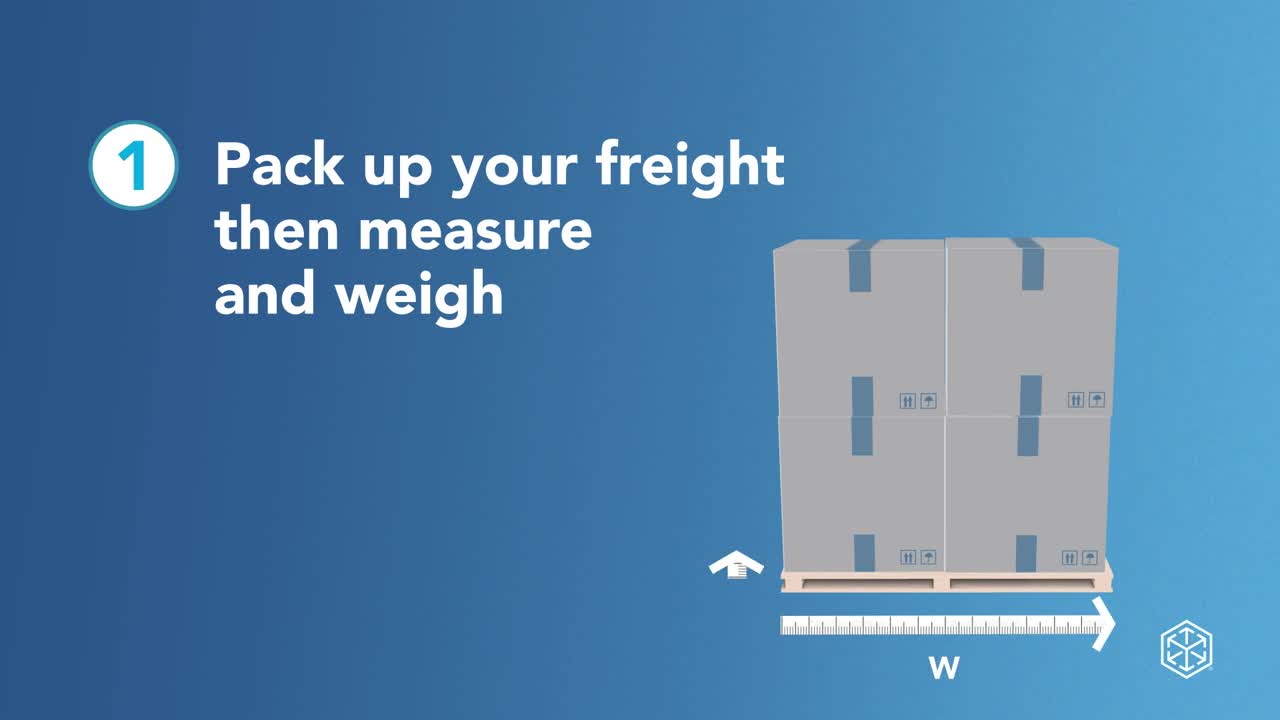How to calculate freight class and density
Here's what you'll find on this page
Freight class chart
| Freight Density (in lbs per cubic foot) | Freight Class |
|---|---|
| Less than 1 | 400 |
| 1 but less than 2 | 300 |
| 2 but less than 4 | 250 |
| 4 but less than 6 | 175 |
| 6 but less than 8 | 125 |
| 8 but less than 10 | 100 |
| 10 but less than 12 | 92.5 |
| 12 but less than 15 | 85 |
| 15 but less than 22.5 | 70 |
| 22.5 but less than 30 | 65 |
| Over 30 | 60 |
How to calculate freight density
If you have several different shipments, use the freight density calculation for each individual piece. Add the cubic inch measurements for the pieces together to get the grand total, then convert to cubic feet for a grand total before dividing by weight.
Remember: This is a simplified method, and actual shipping costs may also consider factors like distance, handling, and insurance. Calculate freight density and freight class without the manual math by using our free online quoting tool.
Measure
Measure the total cubic inches of your shipment (length x width x height)
Convert
Convert that total to cubic feet (divide by 1,728 for quick conversion)
Weigh
Determine the weight of the shipment in pounds
Calculate
Divide the total weight by total cubic feet of the shipment to get the lbs/ cubic ft (as shown in the reference chart above)
Skip the math—we'll automate your freight classification
No need to memorize all the different freight classes—our guided online quoting tool will calculate your freight class based on the weight and dimensions you provide. We make your shipping experience as easy as possible.

How freight class is determined
The NMFC system standardizes how commodities are classified and is based on four main factors:
- 1. Density (most important): Both the space the items take up in the trailer and the weight of the item factors into the density calculation.
- 2. Stowability (important): Items that are more difficult to store will be given a higher freight class. This includes shipments that might be hazardous or very heavy.
- 3. Handling (important): Any freight that requires special handling could be assigned a higher class.
- 4. Liability (less important): Perishable freight or freight that could be easily damaged will be designated a higher freight class.
Remember, the NMFC codes are regularly updated, and specific commodities are assigned class numbers based on industry standards and regulations.
Freight class FAQ
- What is freight class?
-
U.S. less than truckload (LTL) carriers use freight classes to categorize LTL freight. Freight classes are defined by the National Motor Freight Traffic Association (NMFTA), and this has become a standardized system to classify freight in the shipping industry.
Freight class is a common language that carriers and shippers can use to understand the cost and logistics of moving your goods.
- Why is freight class important?
-
There are a few reasons why freight class is important:
- 1. Sets standards: Carriers can easily determine the shipping cost. In turn, shippers can more easily compare shipping rates from different carriers.
- 2. Reduces shipping costs: By determining the correct freight class for a commodity, shippers can avoid being charged more for shipping.
- 3. Ensures accuracy: Freight class is used to determine the level of liability for a shipment. This means if a shipment is damaged during transit, the insurance company will be able to determine how to fairly compensate the shipper.
- What happens if my freight class is wrong?
-
If your freight class is wrong, you may be charged more for shipping. In some cases, you may also be subject to a reclassification fee. This is a fee the carrier charges for reclassifying your shipment.
Reduce the risk of freight classification adjustments by using our automated freight class calculator, or working with one of our freight shipping experts.
- What’s the difference between class 50 freight and class 70 freight?
-
It boils down to density and shipping cost. Class 50 is typically dense stuff like machinery, with over 50 pounds per cubic foot. It's easy to handle and stacks neatly, making it cheaper to ship. Class 70 is on the lighter side, think food items or car parts, around 15 to 22.5 pounds per cubic foot. While not as space-efficient, it's still manageable.
Remove the guess work—calculate freight class automatically in our guided online shipping tool.
- How does density affect my freight rate?
-
Density is based on a shipment's dimensions and weight. It is one factor that influences freight classification. Typically, a shipment with lower density has a higher freight classification. Typically, lower freight classes mean lower prices for freight shipping.
- How do I calculate weight for shipping?
-
If you want to send many packages, it’s a good idea to buy a postal scale. You can weigh each package at a post office, but having your own scale makes it easier and more accurate when you’re shipping a lot of things together.
No scale? No problem! Check out the creative ideas in the video below to accurately measure weight without a freight scale.
Additional resources

What freight classes mean for your business
Learn how to simplify NMFC freight classes with dimensional ratings.
Read the blog
How to Get an Accurate Quote
Discover tips to getting accurate quotes every time. Hint: You can avoid unnecessary costs by providing precise shipment details—not estimates.
Watch now
Free white paper: Demystifying freight classification
A complete discussion of the freight class system coupled with a detailed explanation of dimensional rating.
Download for free
